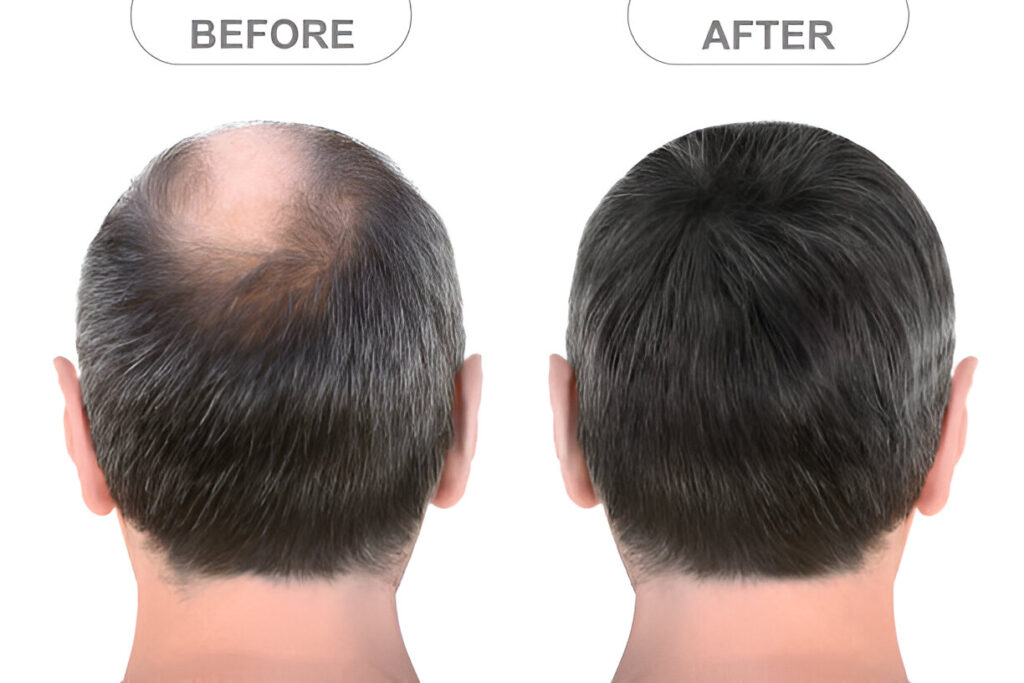Hair loss is a common problem that affects both men and women. It can make people feel less confident and worried about their appearance. Losing hair is normal, but when it doesn’t grow back, it becomes a concern. Some people try shampoos or oils, but these usually give only temporary results. If you’re searching for something that works long-term, permanent treatments may be the best choice. In this article, we’ll look at what causes hair loss and the best permanent options to treat it. You’ll also learn what suits you and how to take care of your hair afterwards.
Why Does Hair Fall Out?
Hair falls out for many reasons. Some people inherit it from their parents, which is called pattern baldness. Others may lose hair due to stress, illness, pregnancy, or poor diet. Hormone changes can also lead to hair thinning, especially in women. Some medicines and tight hairstyles may also damage your hair. When the rate of hair loss is faster than the rate of hair growth, bald patches may appear. It’s important to understand why you are losing hair. Knowing the cause will help you and your doctor choose the right treatment that suits your needs and lifestyle best.
How to Get Rid of Hair Fall in Dubai?
Hair Transplant Surgery
Hair transplant surgery is the most common and effective permanent treatment for hair loss. It works by taking hair from one area of your scalp, usually the back, and placing it into bald areas. There are two main types: FUE (Follicular Unit Extraction) and FUT (Follicular Unit Transplant). FUE takes individual hairs, while FUT removes a small strip of scalp. Both methods give natural results. They work well for people with enough healthy hair to donate. Results take a few months to show. Once the new hair grows, it stays for life. This makes it a lasting solution.
Scalp Reduction Surgery
Scalp reduction is another permanent way to treat baldness. It involves removing the bald skin from the scalp. Then, the part of the scalp that still has hair is stretched to cover the empty area. This method is more suitable for people with a large bald patch, mostly at the crown. It’s not used for the front hairline. Scalp reduction needs more recovery time and may leave a scar. Still, it can give long-term results. It’s a good choice when transplants are not possible due to a lack of donor hair or specific scalp conditions affecting the skin.
What Hair Treatment Is Best for Growth?
Hair Grafting and DHI
Hair grafting is similar to a hair transplant but works on smaller areas. Doctors take tiny grafts of one or two hairs and place them into thinning spots. It’s great for fixing patches or shaping hairlines. A newer method called DHI (Direct Hair Implantation) uses a special tool to put the hair directly into the scalp without cuts or stitches. This makes the process cleaner and faster. Healing is quicker and the results look very natural. Both methods are permanent and work well for people who want fuller hair without major surgery or a long recovery period.
Other Supportive Treatments
Some people use extra treatments to support hair growth. At a polyclinic in Dubai, options like PRP (Platelet-Rich Plasma) therapy use your own blood to help heal and stimulate hair growth. Laser therapy uses low-level light to activate hair roots. While these are not permanent on their own, they can work well when used after a hair transplant. Scalp micropigmentation, a type of cosmetic tattoo, can cover bald areas and give the appearance of thicker hair. These treatments are ideal if you’re not ready for surgery or want to enhance the results of your main treatment plan.
Who Can Get Permanent Treatment?
Not everyone is a good fit for permanent hair treatments. To qualify, you need healthy donor hair, usually from the back of your head. If you have a health condition like diabetes, an infection, or very thin hair all over, surgery may not work well. Women with widespread thinning may also not be ideal candidates. It’s important to get a proper check-up. A doctor will look at your scalp, health history, and hair goals. With the right advice, you can choose a treatment that’s safe, long-lasting, and matches your personal hair loss problem and future expectations.
Taking Care After Treatment
Once you’ve had a permanent hair treatment, it’s important to care for your scalp. Don’t use harsh shampoos or hot styling tools. Avoid tight ponytails or styles that pull your hair. Eat a balanced diet full of vitamins and proteins to help your new hair stay strong. Keep stress low and get enough sleep. Wash your scalp gently and follow all your doctor’s aftercare steps. Hair that grows from transplants stays for life, but how you care for it affects how healthy and full it looks. Good aftercare helps you enjoy strong, lasting hair with confidence.
Final Thoughts
Finding a permanent treatment for hair growth is possible. Options like hair transplants, scalp reduction, and grafting give real, lasting results. Each method suits different people based on their hair type and health. It’s best to speak to a trusted doctor who can guide you. Avoid falling for quick fixes that don’t last. Permanent treatments take time and care, but they can truly restore your hair and your confidence. With the right steps, you can stop worrying about hair loss and start enjoying a fuller, natural look that stays with you for years to come.
Ready to Restore Your Hair?
At Yah Polyclinic, we offer advanced and personalised hair restoration treatments to help you achieve lasting, natural results. Whether you’re dealing with hair thinning or bald patches, our expert team is here to guide you every step of the way.
Book your consultation today and take the first step towards fuller, healthier hair — for life.
Frequently Asked Question
Can a hair transplant give natural-looking results?
Yes, a hair transplant gives natural-looking results when done properly. Doctors place each hair carefully to match your natural growth. Once the new hair grows, it blends in well and looks just like your own hair. Most people can’t tell the difference between new and existing hair.
How long does it take to see results after permanent hair treatment?
You may see new hair starting to grow in 3 to 4 months. Full results usually appear after 8 to 12 months. It takes time because your scalp needs to heal and the hair needs to grow naturally. Being patient gives you the best long-term results.
Is permanent hair treatment painful?
Most people feel only mild discomfort. You’ll be given numbing medicine before the procedure starts. After treatment, you may feel a bit sore or itchy for a few days. These feelings go away quickly with proper care. The results are worth the small amount of pain.
Do I need more than one hair transplant?
Sometimes, one transplant is enough. But if your hair loss continues or you want more coverage, you might need a second session later. Doctors plan each case based on your needs. They aim to give natural results that last a long time without doing more than needed.
Can women also get permanent hair treatments?
Yes, women can get permanent hair treatments too. If they have enough healthy donor hair, options like transplants and grafting work well. The doctor will check their hair type and reason for hair loss before giving advice. Many women have great results with proper care and treatment.





